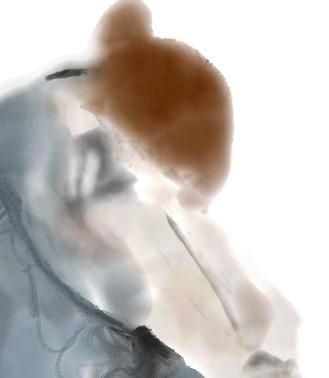
6 minute read
MENTAL HEALTH
from OTK Issue 04
by One To Know
Rising Numbers

Advertisement
Drowning in a Ongoing Pandemic
By Sarah Angle
Illustrations by Amber Davis










A second pandemic has hit the U.S. hard. It’s not
airborne. It’s not spread in classrooms or congested office buildings. We can’t catch it by holding hands, hugging or kissing. It lives, breathes and replicates completely inside our minds, which affects every part of our life.
The mental health fallout from the first pandemic has created its own unique crisis, and there’s no vaccine to treat it.
The attempted suicide rate for girls ages 12 – 17 increased 50% in 2021, according to the Center for Disease Control and Prevention. Girls, it seems, have been hit harder mentally by this pandemic than boys. The reasons aren’t totally clear, but the statistics are alarming.
For kids, especially, suicide happens because they can’t get past “a moment in time,” says Christina Judge, executive director of The Jordan Elizabeth Harris Foundation. Isolation, instability, loss of traditional school structure, and stress from the pandemic have made it worse.
Think about it: As adults, we have years of lifetime experience to draw upon. We see a bad season or a bad situation but have the perspective to know it can be different; it can be better. Kids aren’t old enough to have gained that perspective yet, and perspective is everything.
Getting past a moment in time isn’t necessarily an easy thing. Emotions and feelings come in waves that crest and crash. “Children’s frontal lobes aren’t developed, so we have to be really careful with them,” Christina says. “They are impulsive, and they don’t think about the


consequences. I talked to a 14-year-old boy years ago who said, ‘I tried to kill myself because my girlfriend broke up with me.’’’
Christina says if a child is actively suicidal, parents need to be aware of “access and opportunity,” meaning substance and weapons that a child could use to attempt suicide. That includes over-the-counter medications and firearms, which Christina and Cook Children’s Medical Center advise storing in a lock box.
Jordan Harris died by suicide in 2012. She had a family who loved her; she had a bright future ahead of her; she had supportive friends; she was 23.
That loss inspired the founding of the Fort Worth-based Jordan Elizabeth Harris Foundation (JEHF) and its mission to eradicate suicide by funding depression research, creating awareness, and ending the stigma associated with mental health.
The Foundation is moving mountains here in Tarrant County, where most of its work is focused by funding mental health research at the local level and training kids in 78 different schools across North Texas to identify warning signs in at-risk peers through its Hope Squad program.
Now is definitely the time to address mental health.
“We can’t afford to be a well-kept secret,” Christina says. And she’s right. The U.S. is experiencing a mental health crisis nationwide. Last fall, the American Academy of Pediatrics, American Academy of Child and Adolescent Psychiatry, and the Children’s Hospital Association jointly declared a national emergency in child and adolescent mental health.
Jordan Elizabeth Harris not long before her death.
Ellen Harris Photo
























But adults are hurting, too.
Over 30% reported experiencing symptoms of anxiety and/or depression disorder since May 2020. That number is up roughly 20% since before the pandemic began, according to a report from the Kaiser Family Foundation.
Jordan Harris had been experiencing severe depression before she died by suicide. Mental health matters, and so does knowing how to detect and prevent suicide in the lives of people around you. That’s why The JEHF provides QPR training (question, persuade, refer) to any and all members of the community.
“Think of QPR like CPR for mental health,” Christina says. She says most people don’t know what to say when faced with somebody experiencing a mental health crisis. This training provides the skills to look, listen, and respond. “I have a lot of people come up to me and say, ‘I took your QPR training and literally had to use it the other day.’ Having that training gives you the power to save a life.”
In 2020, 268 people died by suicide in Tarrant County, according to the Medical Examiner’s office; 25 of those were children. Cook Children’s reported that 2020 was the first year ever that suicide was the leading cause of traumatic death for children recorded at the hospital.
Christina says it’s hard to quantify human nature and why people take certain actions, but “risk factors” play a role in suicide and suicidal ideation.
Risk factors include things like financial loss, divorce, deaths in the family, mental illness struggles and job loss. Most people also have “support factors” like family, faith and social networks to balance out those risks when they do happen.
The past two years have created a heavy risk burden for many families and individuals. That’s why understanding how to talk about suicide and mental health is now more important than ever.
“It’s okay to ask, ‘Are you okay,’” Christina says. “If they say no, then say: ‘Then tell me what you’re not okay about?’ Then ask: ‘Are you thinking about hurting yourself?’’’
She says that we have to listen, and we need to see if they’re interested in doing a safety plan that includes activities and a call list in a crisis. “You have to have judgment; it’s not black or white. It’s very squishy and gray.”
Scan QR code to learn more about suicide prevention training.
National Suicide Prevention
Lifeline: 800.273.8255









